Spray painting is a very common method for updating the appearance of walls, furniture, and other items. It offers a smooth, uniform finish and is quick and reasonably priced. But “WHY IS MY SPRAY PAINT BUBBLING” may be an annoying problem that can undo all of your efforts.
Numerous factors, including as heat, humidity, improper application, or inadequate surface preparation, can cause bubbling. If you’re a do-it-yourselfer, knowing how to stop and cure bubbling will help you get a polished finish.
We will explain the reasons behind spray paint bubbling in this blog article and show you some easy fixes to help you accomplish your next job perfectly. Let’s get started and discover how to prevent spray paint from bubbling.
Spray Paint Bubbling And Its Impact On The Final Finish:
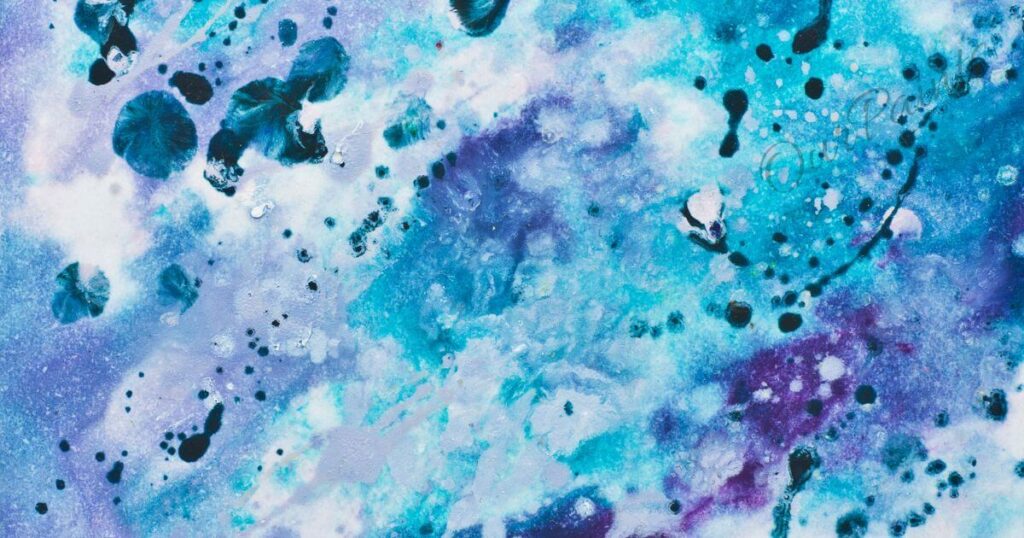
Comprehending Spray Paint Bubbling:
Professional painters and do-it-yourselfers may find spray paint bubbling to be a bothersome problem. It happens when bubbles or blister-like forms show up on a recently sprayed paint job, destroying the intended smooth and perfect finish.
To avoid this phenomenon and produce outcomes that seem professional, it is essential to understand its sources.
The Effect of Bubbling:
Spray paint has an effect that extends beyond aesthetic considerations. It not only ruins the painted surface’s aesthetic attractiveness, but it may also point to underlying problems that could shorten the paint job’s lifetime and durability.
Bubbles have the potential to retain moisture, which might eventually cause peeling and cracking and weaken the paint’s protective coating.
Causes of Spray Paint Bubbling:
There are some reasons why spray paint can bubble, and to find the right fixes, it’s critical to pinpoint the exact ones. Humidity or moisture is a typical offender because too much moisture in the air or on the surface that has to be painted might prevent the paint from adhering correctly.
Bubble development can also be caused by other causes, such as inadequate surface preparation, incompatible paint materials, or painting in adverse weather.
Preventing and Handling Spray Paint Bubbling:
Some actions may be performed to stop and deal with this issue. A smooth and sturdy substrate for the paint to adhere to may be created by thoroughly cleaning, sanding, and priming the surface.
It’s also critical to use premium paint supplies that are suitable for the surface and the surrounding environment. Monitoring the weather and avoiding painting in extremely hot or cold conditions will help reduce the chance of bubbling.
Examining Workable Solutions:
To address this problem head-on, we will go further into the particular reasons why spray paint bubbles in the sections that follow. You will acquire the information and self-assurance necessary to accomplish faultless paint finishes that last throughout time by understanding this frequent issue.
KNOWING THE REASONS BEHIND SPRAY PAINT BUBBLING:

To successfully avoid and handle spray paint bubbling, it is first necessary to understand these factors. You can get a smooth, bubble-free finish for your spray painting projects by following approved application techniques, selecting the appropriate paint, and taking the required precautions, such as sufficient surface preparation.
Moisture and humidity:
Humidity and moisture are frequent causes of bubbling spray paint. Uneven finishes can result from high humidity trapping water vapor between paint coats. This is especially troublesome in places like toilets and basements that have little ventilation.
Select the ideal painting circumstances, aiming for a relative humidity level of 50% or below, to avoid bubbling caused by moisture. To lower humidity levels, use an air conditioner or dehumidifier. Before you begin, make sure the surface is dry and clear of moisture.
High-quality spray paints are less prone to bubble and often have superior moisture resistance since they are specifically prepared for the intended surface and environment.
If bubbling happens, let the paint dry, sand down the impacted area, carefully clean the surface, and apply a fresh coat using the right methods.
By knowing how moisture and humidity affect spray paint bubbling, one may avoid this frequent problem by preparing properly and creating the right atmosphere.
Poor surface preparation:
Inadequate surface preparation is a common cause of bubbling spray paint. To stop paint from leaking or lifting, it is crucial to make sure the surface is clean and clear of impurities such as dirt, dust, grease, or oil.
Smoothing the surface with sandpaper eliminates any defects, rough patches, and old paint, promoting uniform adherence to the fresh layer.
Primers provide paint with a strong base, enhance adherence, and seal porous surfaces to keep moisture out and minimize bubbling. Lastly, when preparing the surface, take the surroundings into account.
Work in a well-ventilated space with suitable temperature and humidity levels since painting in extremely hot or cold temperatures might affect how quickly the paint dries.
You can drastically lower the likelihood of spray paint bubbling and obtain a smooth, bubble-free finish that improves the longevity and appearance of your project by using the right surface preparation procedures.
Incompatible paint products:
Incompatible paint products can result from mixing or layering several types of paint on top of one another, which can cause spray paint to bubble. Chemical reactions, bubbling, and uneven drying can all be caused by incompatibility.
Make sure the paint materials you intend to use are appropriate for the surface and other coatings by carefully reading their labels and specifications to prevent this problem. If in doubt, get advice from a paint maker or specialist.
It could occasionally be necessary to remove incompatible layers and begin over with a suitable primer and paint mix.
Preventing incompatible product-related spray paint bubbling is essential. To acquire professional-looking results, do your research and choose the appropriate paint products for your job.
Incorrect Methods For Spraying:
Incorrect spraying procedures can lead to the common problem of spray paint bubbling. Applying thin, uniform layers of paint and waiting for each layer to dry completely between applications is crucial to preventing this. Boiling is also more likely when the spray can is held too near to the surface.
Uneven application, spraying too rapidly may result in bubbles. To avoid the paint’s adherence being harmed by dirt, oil, or moisture, the surface must be properly prepared before spraying. Before painting, make sure the surface is completely clean and dry.
To guarantee the greatest results, adhere to the manufacturer’s directions for the particular spray paint you are using. You may reduce the chance of spray paint bubbling and accomplish a polished, faultless finish on your projects by using these tactics.
IDENTIFYING SPRAY PAINT BUBBLING IN DIFFERENT SCENARIOS:
Bubbling spray paint is a problem that may be annoying for both inexperienced and professional painters. Finding practical remedies for spray paint bubbling begins with comprehending its causes. Let’s look at some typical situations that might lead to spray paint bubbling and how to spot them.
Humidity:
Elevated humidity is one of the most frequent causes of spray paint bubbling. The extra moisture in the air might impede the paint’s drying process while painting in a humid climate. As a result of the paint trying to dry too rapidly and trapping moisture inside the layers, bubbles develop.
Look for huge bubbles that occur soon after painting, usually together with a sticky or moist surface, to detect this situation.
Surface Pollution:
Surface contamination is another element that might cause bubbling in spray paint. Bubbles may appear in the paint if the surface being painted is not thoroughly cleaned and prepped. Problems might arise from contaminants such as grease, oil, dust, or even paint coats that were not properly primed or sanded.
Look for tiny bubbles strewn across the surface in the damaged regions; these might be signs of poor adhesion, which can help you recognize this situation.
Incompatible Materials:
Using mismatched ingredients may cause spray paint to bubble. Bubbles can occur from a reaction between various paint kinds, such as oil-based and water-based paints, or by putting a fresh coat of incompatible paint over an old one.
Look for uneven or oddly shaped bubbles that emerge soon after adding a fresh coat of paint to spot this situation.
Improper Application Techniques:
Using the wrong application methods might cause spray paint to bubble. Bubbles can be produced when paint is driven out in uneven layers by applying too much paint, spraying too hard, or holding the can too near to the surface.
Bubbles may be concentrated in regions where the application was uneven or excessive to indicate this situation.
Solutions For Preventing Spray Paint Bubbling:
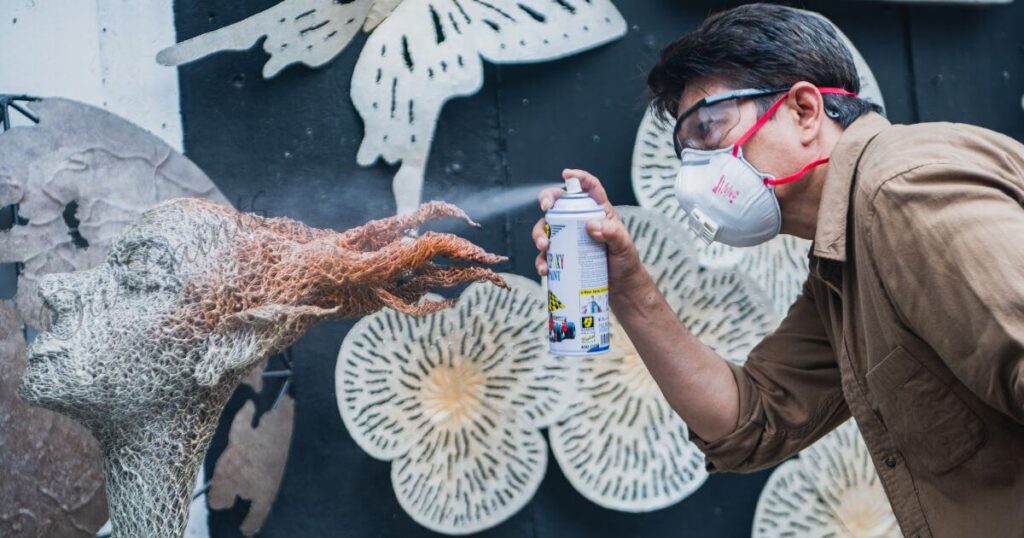
Although bubbling spray paint can be an annoying problem, there are a few ways to help stop it from happening. Here are a few efficient techniques to stop spray paint from bubbling and give your projects a smooth, faultless finish.
Appropriate Surface Preparation:
Making sure the surface is clean and clear of impurities is one of the most important measures in avoiding spray paint bubbling. After giving the area a good scrubbing with soap and water, remove any remaining debris, dust, or oil.
To get a smooth and even surface for painting, don’t forget to sand any uneven or rough spots.
Use High-Quality Spray Paint:
The outcome may be greatly altered by spending money on high-quality spray paint. Inexpensive, inferior spray paints can include contaminants or additives that can cause bubbling.
Select well-known brands that are renowned for their dependability and durability.
Appropriate Application Method:
Another important factor in avoiding bubbling is using the spray paint appropriately. Make sure you are applying thin, even coats and holding the can at the proper distance from the surface.
Applying several thick applications or over-spraying might increase the likelihood of bubbling.
Check Weather Conditions:
Painting in unfavorable weather—such as excessive humidity or chilly temperatures—can cause paint to bubble. Painting should take place in a space with good ventilation, moderate humidity, and temperature. Steer clear of painting on hot, bright days or in overcast or humid weather.
Give It Enough Time to Dry:
When it comes to spray painting, patience is essential. Before adding the next layer of paint, let the previous one completely dry.
Painting may blister or bubble if the drying process is hurried. Regarding drying periods, heed the manufacturer’s directions and refrain from handling or re-coating too soon.
Consider a Clear Top Coat:
Adding a clear top coat to the spray paint can help shield it from damage and keep bubbles from forming. Select a clear coat made especially for spray paint to make sure it works.
Steps To Fix Spray Paint Bubbling Issues:
Don’t worry if spray paint bubbling on your projects has been a bothersome problem for you. You can take some actions to resolve this problem and get a faultless finish.
Determine the reason:
It’s critical to ascertain the underlying cause of the bubbling before moving further with the treatment. Some things, including insufficient surface preparation, high humidity, incompatible paint layers, and spraying in extremely cold or hot conditions, can cause bubbling.
Once you know what’s causing it, you can take appropriate action.
Sanding and scraping:
It is important to remove any loose or bubbling paint if it is the result of a prior application or paint that is not adhering correctly. To achieve a smooth surface, carefully sand or scrape away the damaged areas using sandpaper or a scraper.
Surface preparation:
Avoiding bubbling problems in the future requires careful surface preparation. Make sure the surface is clear of any impurities, such as dust, oil, or wax, and that it is dry and clean. After cleaning the surface with a degreaser or light detergent, give it a good rinse and let it dry.
Application of primer:
Using a primer can enhance adherence and stop bubbling. Pick a primer that works well with the paint kind you’re using, then apply it according to the manufacturer’s directions. Apply a thin, uniform layer of primer, and let it fully dry before moving on to the next step.
Proper spraying technique:
The right way to spray paint is to make sure you use uniform and smooth strokes and stay at a constant distance from the surface.
Spraying too near to or too far away from the target might cause uneven coverage and possibly bubbling. Apply several light layers, letting each one dry completely before adding the next.
Climate control:
The results of your spray paint job can be significantly impacted by environmental conditions like humidity and temperature.
Avoid spraying when there is a lot of humidity or in extremely hot or cold weather since these might cause bubbling. Select a location that is moderately heated and humid, with good ventilation.
After-application maintenance:
As directed by the manufacturer, give the spray paint enough time to cure. Till the paint has fully dried, refrain from touching or otherwise disturbing the painted surface.
Take into account using a protective sealer or clear topcoat to further preserve the paint and increase its longevity.
Tips And Tricks For Avoiding Spray Paint Bubbling In Future Projects:
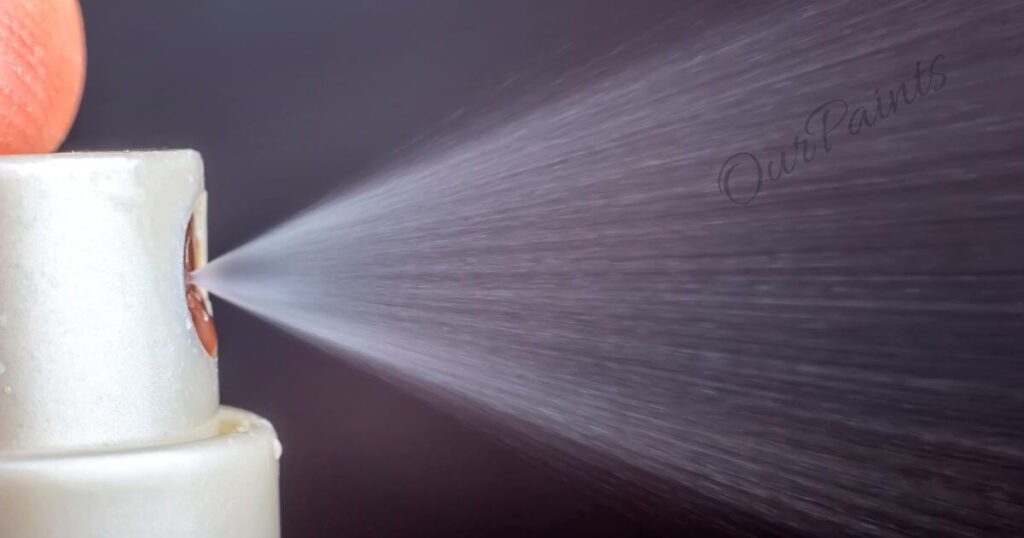
Selecting ideal spraying weather conditions:
Achieving a smooth and perfect finish with spray paint requires careful consideration of the weather during spraying. Days with wind are best for spraying since they prevent uneven coating and overspray.
For best effects, humidity levels should be between 40% and 50%. Avoid painting in extremely cold or hot conditions, as they might impact the paint’s adherence and drying time.
The recommended temperature range is 50°F (10°C) to 90°F (32°C). Before painting, surfaces need to be well-prepared, dry, and clean.
If you want to reduce the chance of paint bubbling and obtain a professional-looking finish, you must schedule your spray painting project based on the weather prediction.
You can guarantee a seamless and perfect outcome by taking the time to prepare your project and review the weather prediction.
Thoroughly cleaning and degreasing the surface:
To avoid bubbling, make sure the surface is clean and clear of any debris before beginning a spray painting operation. Compressed air can be used to drive away lingering dust particles, and a soft brush or cloth can be used to remove loose material.
Mix dish soap and warm water to make a mild detergent solution, then use it to gently scrape the surface.
Rinse well to get rid of soap residue. If required, use an appropriate degreaser—such as rubbing alcohol or a commercial agent—and follow the manufacturer’s directions to clean the surface. Make use of a fresh towel to remove any leftovers.
Before beginning the spray painting procedure, let the area thoroughly dry. This stage is essential for a flawless, bubble-free finish since it lowers the possibility of bubbling and guarantees a polished appearance.
For a finish that is bubble-free and smooth, the surface must be thoroughly cleaned and degreased.
Before painting, make sure the goods are compatible:
When spray painting, paint bubbling is a typical problem that can lead to confusing effects. It is crucial to check paint product compatibility before beginning a job to avoid this.
Because various paints have different chemical makeup, they may react adversely and cause bubbling if they are not compatible.
Apply a thin coat of paint to a small, discrete area and let it dry according to the manufacturer’s instructions to evaluate compatibility.
If no problems are discovered, carry out the job. Should issues arise, resolve them by selecting an alternative paint product or altering the surface preparation method.
It is essential to test compatibility in advance to save frustration and guarantee a faultless, long-lasting finish.
Using the appropriate spraying techniques:
Spray painting is a technique that has to be applied and maintained carefully to prevent the frequent problem of spray paint bubbling.
Maintaining a constant distance between the spray can and the surface to be painted is crucial to preventing this since getting too near might lead to overspray and getting too far away could cause the paint to dry before it reaches the surface.
An even coat can be achieved by keeping the can moving smoothly and slightly overlapping each pass. Conditions such as well-ventilated spaces with reasonable humidity and temperature should be taken into account.
A smoother finish and the avoidance of irregularities can also be achieved by giving the can a good shake before spraying.
Preventing bubbling can also be achieved by layering paint correctly, and applying several thin layers as opposed to one heavy one. One may become an expert in spray painting methods with training and experience.
COMMON MISCONCEPTIONS AND MYTHS ABOUT SPRAY PAINT BUBBLING:
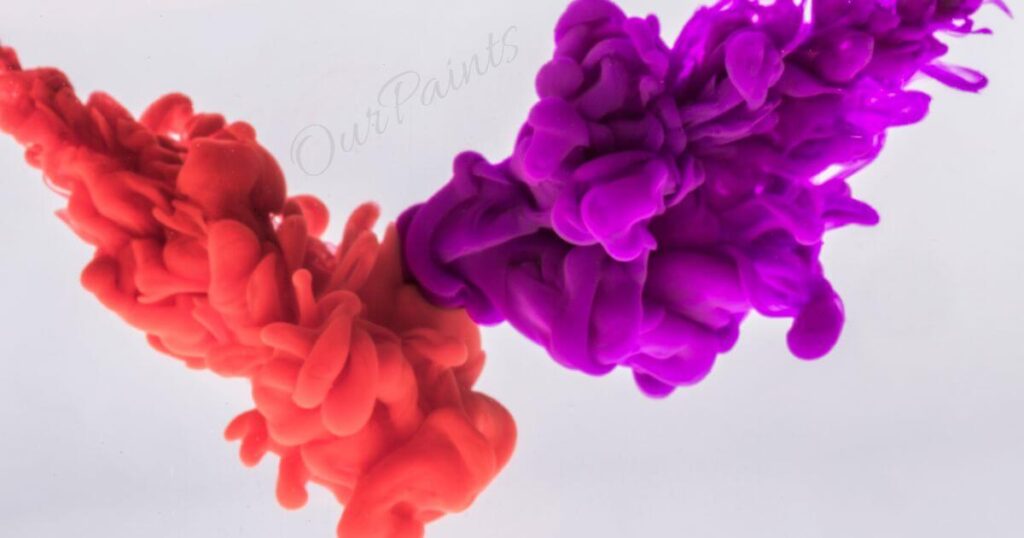
The Function of Application Methodology:
One prevalent misperception is that improper application technique is the only reason why spray paint bubbles. Although incorrect application can cause bubbling, this is not the only element that is at work.
Recognizing Several Contributing Elements:
Some variables, such as surface preparation, humidity, temperature, and paint type, can cause bubbling. It’s critical to understand that bubbling calls for consideration beyond the paint application method.
The idea that painting with extra layers will stop bubbling is another misconception.
Painting with Layers and Bubbling:
The idea that painting with extra layers will stop bubbling is another misconception. Excessive painting layers may make the issue worse.
Observing the Manufacturer’s Instructions:
For best results, it’s crucial to adhere to the manufacturer’s recommendations on the amount of coats. When it comes to spray paint, more does not always equal better.
Some individuals think that bubbling may be avoided by priming the surface before spray painting.
The Part Primers Play:
Some individuals think that bubbling may be avoided by priming the surface before spray painting. Although using a primer can help minimize bubbling and enhance adhesion, it is not a perfect solution.
The Significance of Surface Readiness:
Cleaning, sanding, and priming the surface properly are necessary steps to guarantee a smooth, bubble-free finish. The best results from primers come from proper surface preparation.
It is a common misperception that applying better spray paint would instantly stop bubbling.
Conclusion:
While attaining a perfect spray paint finish may appear impossible, it is unquestionably doable with the appropriate skills and experience. We have looked at some potential reasons for spray paint bubbling in this blog article and offered workable fixes.
To ensure a smooth and uniform spray paint application, keep in mind that adequate surface preparation is essential. Before spraying, give your surface a thorough cleaning, sanding, and priming.
By doing this, the chance of bubbling will be reduced and a strong base for the paint to stick to will be created.
Selecting the proper spray paint kind and brand is equally crucial. Select premium paints that are made especially for the surface you are painting. To get a finish that looks professional, try experimenting with different spray methods, such as light and even coats.
Obstacles are a part of the journey and you shouldn’t give up. It takes time and effort to become an expert at spray painting. Acquire knowledge from professionals, learn from your errors, and keep up with the latest methods and goods available on the market.
By keeping these pointers in mind, you will be prepared to handle any problems with spray paint bubbling and get the perfect finish you want. I love spraying!
FAQs About WHY IS MY SPRAY PAINT BUBBLING?
What causes spray paint to bubble?
Bubbling spray paint can happen for some reasons. An often-cited reason is inadequate surface preparation. Paint may not adhere correctly and bubble if the surface is not properly cleaned, degreased, or sanded.
Applying paint in harsh weather—such as excessive humidity or strong sunlight—can lead to problems with solvent evaporation and bubbling.
How can I prevent spray paint from bubbling?
It is essential to properly prepare the surface before painting to avoid spray paint bubbling. Make sure the surface is completely clean and free of any grease, grime, or outdated paint. Sanding can produce a rough surface that will improve paint adherence.
Confirm that the paint is being applied within the suggested temperature and humidity range indicated on the paint container.
What should I do if I encounter spray paint bubbling?
It’s advisable to take quick action if you see bubbling in your spray paint. Put an end to painting the damaged area and let it dry fully.
Sand the region that has bubbles carefully until it is smooth and error-free. Once more, wipe the surface to get rid of any dust or particles. You might have to completely remove the paint and start over if the bubbling doesn’t go away.
Is there a specific type of spray paint that is less prone to bubbling?
Although bubbles can occur with any type of spray paint, some varieties may not be as likely to occur. Selecting premium spray paints from reliable companies is advised.
Primers made especially for the surface you’re painting can also increase adherence and lessen the chance of bubbling.
Will using high-quality spray paint prevent bubbling issues?
While high-quality spray paint may have better formulation and adhesion properties, it won’t automatically prevent bubbling if other factors are not addressed.
Consider all aspects of the painting process, including surface preparation and environmental conditions.

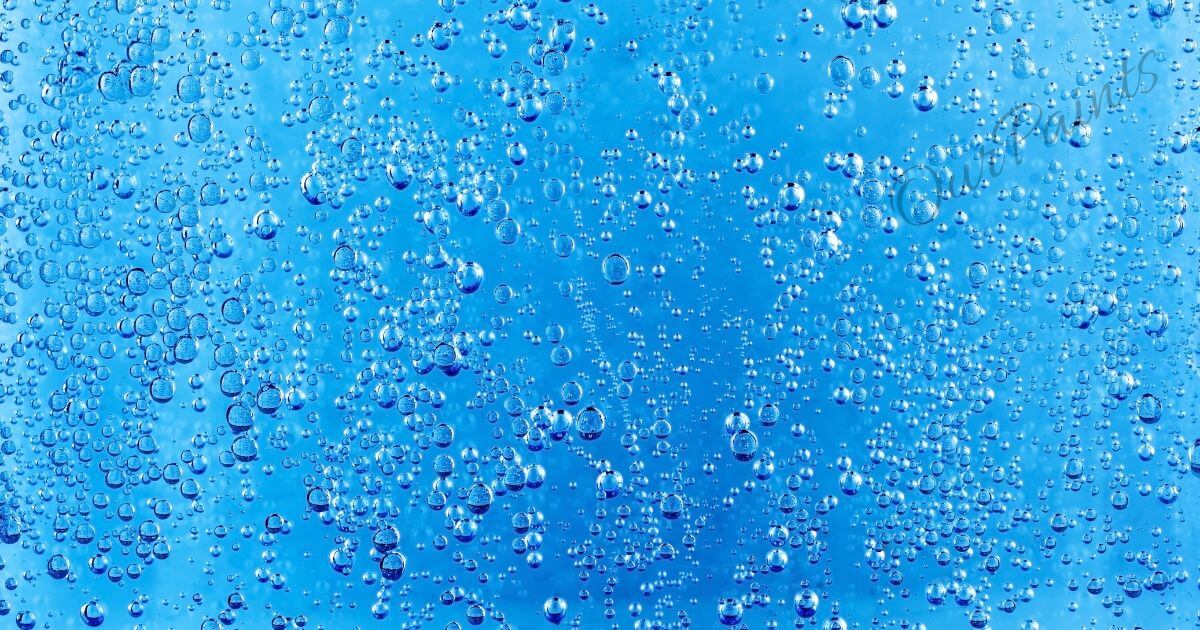
1 thought on “WHY IS MY SPRAY PAINT BUBBLING?”